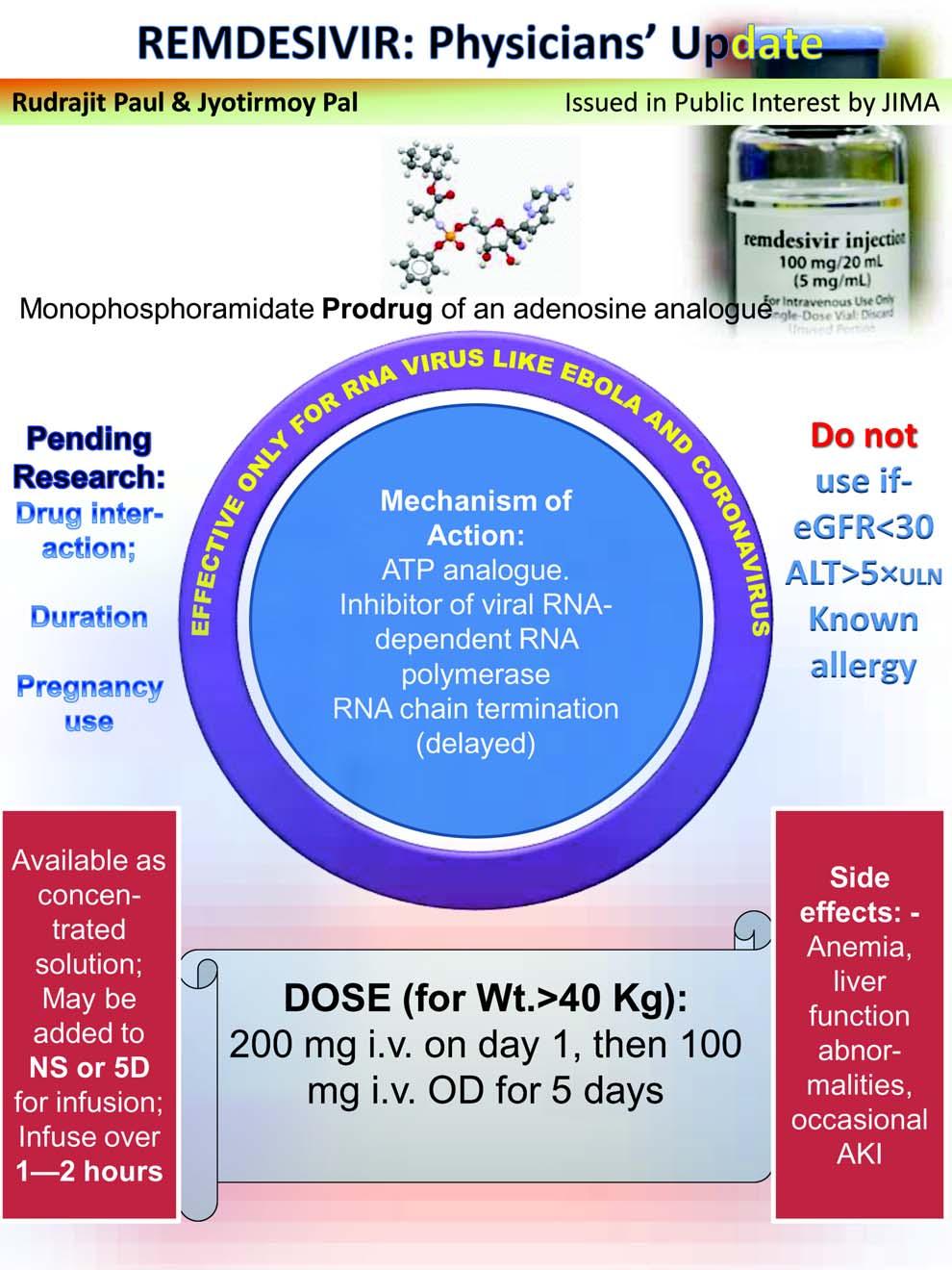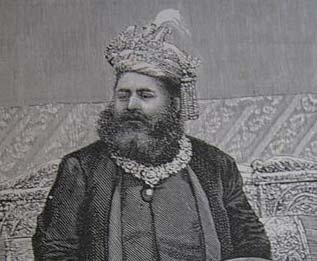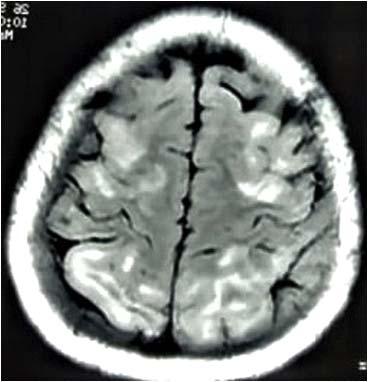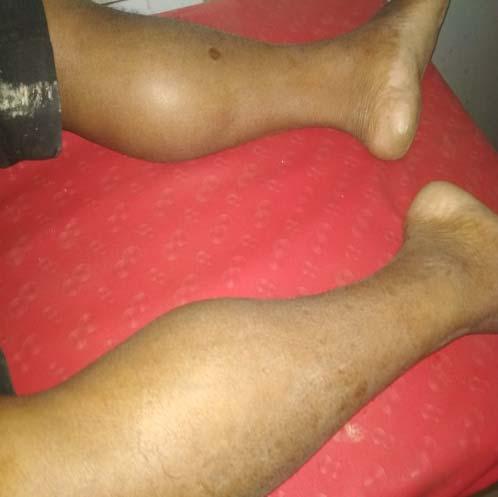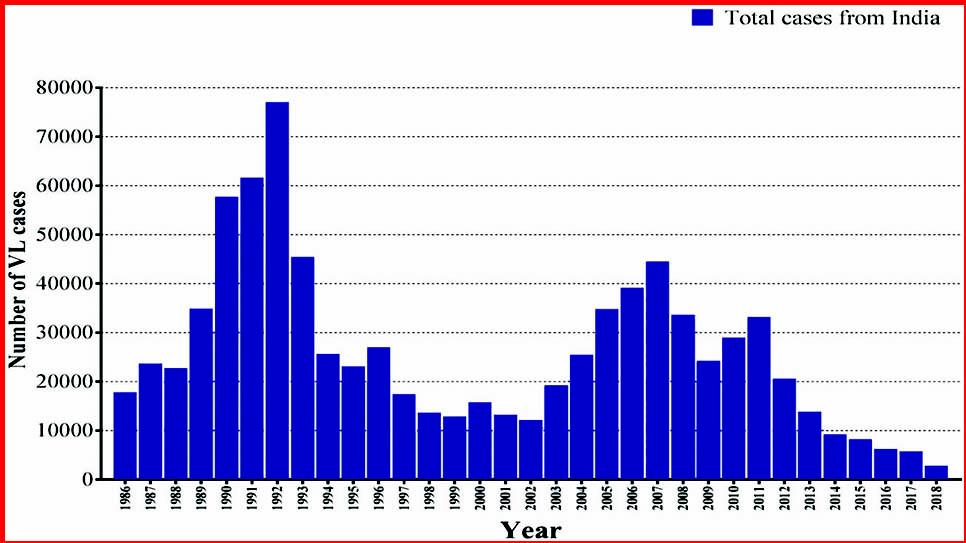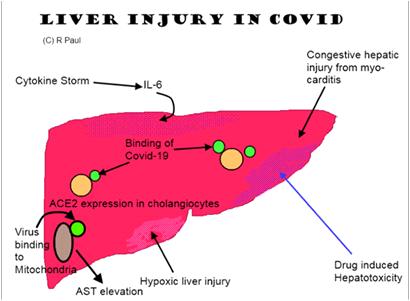
14 minute read
Review Article
JOURNAL OF THE INDIAN MEDICAL ASSOCIATION, VOL 118, NO 06, JUNE 2020
Review Article Managing COVID-19 in India – STRICT 3C
Advertisement
Shashank R Joshi 1 ,Viraj Suvarna 2
The COVID 19 epidemic is gaining momentum in recent times yet prevalence and case fatality rates are lower than many developed countries. Many factors have been postulated for this scenario however preparedness is the need of the hour for future expansion of disease burden.
India needs to continue to be STRICT and follow the 3Cs, viz., Social distancing, Test (screening), Retest (confirmatory), Isolation, Contact tracing and Treatment, with focus on Cleanliness, Containment, and Clusters.
[J Indian Med Assoc 2020; 118(6): 13-6]
Key words : Social distancing, cleanliness, containment, contact tracing.
On December 31, 2019 the WHO was informed of a cluster of cases, of an unusual nature, emanating from the wet (seafood) market of Huanan in Wuhan, Hubei province of China. It is a zoonotic virus, found in bats (who have an altered immune system and hence is not affected by the virus) and it jumped to humans either through a pangolin (scaly anteater) or snake, when the human ate these animals. The WHO decided to name it novel Corona virus 2019 or nCoV 2019, and as it was similar to, but different from the earlier SARS (Severe Acute Respiratory Syndrome) also caused by a Corona virus, they also called it SARS CoV-2. On January 30, 2020 the WHO called it a Public Health Emergency of International Concern (PHEIC), because of the way it was spreading like wild fire, initially in China, and then beyond China to neighbouring countries and eventually countries in Europe, the Middle East, India and also the US. On February 11, 2020 the WHO named the disease as COVID-19 or COronaVIrus Disease. And finally on March 11, 2020, the WHO changed the nomenclature from PHEIC to pandemic. In other words, ‘corona’tion of the epidemic began. As of now more than 7.77 million cases have been reported globally and close to 4.3lac lives have been lost. 1,2
1 MD, DM, FICP, FACP(USA), FACE(USA), FRCP (Lon, Glsg & Edin), Consultant Endocrinologist, Lilavati, Bhatia, Apollosugar, Mumbai 2 President, Clinical Pharmacology, Eris Lifesciences, India
Received on : 13/06/2020 Accepted on : 18/06/2020 Editor's Comment :
Containment of the COVID 19 pandemic in our
country will require strict vigilance and action.
STRICT measures involving Social distancing,
testing, isolation,contact tracing and treatment are the key to success.
• India is stubbornly refusing to go the way the world is being ravaged by COVID-19. India has a lower prevalence rate and low case fatality rate.When one compares this to a dense population of 1.3 billion, it is a wonder India is doing better than the US (where New York is the epicentre) where over 1.16 million deaths have been reported and they have the highest number, viz., ~3.6 lakh cases in the world. What is it about India that has resulted in a better outcome? All kinds of theories have been put forward. Researchers at the International Center for Genetic Engineering and Biotechnology (ICGEB) reported, in a not yet peerreviewed pre-printed publication, that the virus strain in India is a mutant. The micro RNA mutation (hasmiR-27b) of the Spike or S protein apparently makes the virus less lethal in India. 3 There is a map going around in the Whatsapp University showing that where malaria is endemic, the Corona virus prevalence is low and vice-versa, almost to suggest that somehow the malaria parasite/infection seems to impart a peculiar immunity towards the novel Corona virus 2019. The fact that India includes BCG vaccination, given on the day of birth, as part of its Universal Immunisation Program (UIP) also seems to have equipped us with a unique immunity to this virus. We also seem to have
13
JOURNAL OF THE INDIAN MEDICAL ASSOCIATION, VOL 118, NO 06, JUNE 2020
a higher number of Natural Killer cells. India is a tropical country and the hot Indian summer is expected to be a deterrent to this virus which seems to prefer a cooler climate.We currently don’t know if the BCG vaccine and oral polio vaccine to our youth has protected us. Add to this, India is a young country in that most of our population is in the younger, working age-group, arguably less susceptible to the serious complications of COVID-19.
But all the above are conjectural, hypotheses at best that need to be tested. What is however known is that despite the Goldman Sachs employee making a comment (Thank God this happened in China and not India), India is continuing to stun all critics in the way India is managing COVID-19. Is India really a backward and poor country, 50 years behind the US, when in real time we are actually 9.5 to 10.5 hours ahead of the US? In the US, people have run out of Personal Protective Equipment (PPE), they are having to innovate and use one ventilator for 2 or even 4 patients, their doctors are exhausted, petrified and annoyed at the way the administration is still not able to protect them from contracting the virus and then dying of the disease. In comparison, India started implementing tough measures very early. The Janata curfew announced by the Prime Minister for a day (March 22) was only the prelude to a nation-wide complete (except for essential services) lock-down starting March 24,that continued till 8 th June and upto 30 th June in containment zones. Essentially this was done to break the chain of transmission and flatten the epidemic curve. Surprisingly, many Indians took this seriously, practising social distancing, personal (handwashing with soap and water), and public hygiene (Swach Abhiyan), and this has helped in stemming the spike in cases, alot though some spreader events did occur across India but it was followed by isolation, quarantining those exposed but not showing symptoms, and contact tracing. Relaxations in certain areas was undertaken to revive the sagging economy.
The WHO Director-General, Tedros Adhanom Ghebreyesus, keeps saying, “Test, Test, Test.” But in India, testing is being done only for those who are symptomatic and those who are contacts of cases or 14 those who have a relevant travel history or are health care workers. It is not cost-effective to test 1.3 billion Indians.. FevIR or infra-red thermal scanners are being used to detect elevated body temperature,but they may have limited utility especially with a large number of asymptomatic cases. But above all, it looks like Indians ‘detest’ being ‘tested’. Why? Because there is a social stigma attached to the fact that people have come to your residence to test you and God forbid, if you are Corona positive, then you will be isolated and your family members quarantined, and all your contacts will be traced, and if positive they will be isolated, but if they are negative they will be quarantined. Testing strategy has evolved in India and is a perfect example of public private partnership.
To understand how best to stop this epidemic in its tracks, one must understand epidemiology. For most medical students, this was a major part of the subject, Preventive & Social Medicine (PSM) or Community Medicine, and a textbook written by Park & Park, but it was a neglected subject and done only because one had to pass MBBS, then go on to specialise, and then super-specialise in the more exciting clinical disciplines. But now all have realised that Community Medicine and epidemiology are extremely important disciplines. Apparently there are four phases of an epidemic; the first phase is when cases are imported, the second phase is when transmission happens locally from one infected person to close contacts, phase 3 is when community transmission happens even without history of contact or relevant travel history, and phase 4 when it becomes a full blown epidemic. In a way it resembles a product lifecycle with a lag phase of slow growth, then the logarithmic or exponential growth, then a plateau, and finally a decline. India seems to be still somewhere between Phase 2 and Phase 3, but the exponential growth or spike in cases that people were fearing has still not happened. Why? Are we that resilient? Or is it that our unhygienic environments have already given us an immunity that makes it easier for us to not succumb to such deadly viruses? Having said this, let environment. 4,5
us re-examine the triad, viz., agent, host and
JOURNAL OF THE INDIAN MEDICAL ASSOCIATION, VOL 118, NO 06, JUNE 2020
Agent :
The novel Corona virus 2019 is a positive sense RNA virus, and it belongs to the family of 7 beta Corona viruses, of which 4 cause a common cold, one caused SARS and one caused MERS (Middle East Respiratory Syndrome). From a case fatality rate (CFR), this virus has the least CFR (it varies from as low as 0.6% to as high as ~4%; much higher among the elderly as we are seeing in Italy), while SARS (bats, palm civet cats) had a CFR of 10% and MERS (bats, dromedary camel) has a CFR of 35%. While SARS started in 2002 and expired on July 5, 2003, MERS is still smouldering and in November 2019 the WHO reported 2494 cases and 858 deaths. It is so named as it looks like a crown (in the Spanish language, crown = Corona) due to the spikes emanating from the body. The virus spreads through droplets (heavy, micro) or through fomites, though airborne transmission (up to 180 cm) has been reported (hence the dictum keep at least 2 meters of 6 feet away from each other), fecooral, urine, and tears are also reported to carry the virus. It enters our upper respiratory tract either when we inhale or touch our face (mouth, eyes, nose – MEN) with droplets that are still alive on some surfaces. Coughing, sneezing and even talking can spread the virus as speech is forced expiration. This Spike or S1 protein is used by the virus to attach itself to the Angiotensin Converting Enzyme (ACE)-2 receptor in respiratory epithelial cells though they are also present in the heart, vascular endothelium, kidneys, endocrine pancreas, testes and liver. Thereafter, another Spike protein S2 fuses with the endosome in the cytoplasm and within this endosome (ERGIC or Endoplasmic Reticulum Golgi Intermediate Compartment) the virus replicates, assembles and gets released. Like any virus it is nothing but a bunch of genes in search of a living cell within which it multiplies. In other words, if it does not get such a viable cell, it will die. The more virulent is the virus, the faster will it die as it will kill humans and then kill itself if it does not get to another living human cell. It is extremely contagious with an R0 of about 2.3 to 3.2 (basic reproductive number), hence the need to break the chain of transmission 15
through social distancing. 6
Host & the Environment :
The Indian human being seems to be different, for the reasons alluded to earlier on the first page. Are we genetically resilient? Or has it do with a geneenvironment interaction? Indians are so used to getting infections, because of the unhygienic surroundings, that when confronted by this novel virus, our immune system is better able to manage the virus? Again, conjectural, hypothetical, speculation, and good to have discussions, especially nowadays when we are in this lockdown situation with nothing to do except intellectually masturbate using the electronic medium, be it social media, print media, or television. ICMR has done some mathematical modelling work (Dr. RR Gangakhedkar et al) 7 which seems to suggest that port-of-entry-based entry screening of travellers with suggestive clinical features and from COVID-19 affected countries, would achieve modest delays in the introduction of the virus into the community. Once the virus achieves transmission within the community, quarantine of symptomatics may have a meaningful impact on disease burden. As a public health measure, health system and community preparedness would be critical to control any impending spread of COVID19 in the country. A mathematical modelling study done by Kucharski AJ et al, 8 published in the Lancet, also concluded that COVID-19 transmission probably declined in Wuhan during late January 2020, coinciding with the introduction of travel control measures. India swung into action swiftly and curtailed all international and then national flights in March which has resulted in a considerable break in the chain of transmission.
Our take is that rather than focusing on why Indians may be less susceptible to COVID-19 based on conjecture, let us focus instead on concrete measures taken by intelligent Indians to stem the rot and ensure it did not flare up. Commissioning a nationwide lockdown for months is a big decision, as it will mean a lot of economic loss and untold hardships for the poor migrant labourers/daily wage earners. But to save the country from what’s happening in the US and big five countries in Europe (Italy, Spain, UK, France, Germany), such measures had to be taken. Testing is
happening but in a structured focused manner, despite
JOURNAL OF THE INDIAN MEDICAL ASSOCIATION, VOL 118, NO 06, JUNE 2020
the fact that at times these workers face the brunt of a community forced to be locked down, and scared of what would happen if they turned out to be positive. Then of course tracing of contacts even though it is so difficult in such a large country where some people actually try to subvert the process and run away from healthcare workers who have come to save their lives and the lives of their families. Quarantining of the contacts is also being done, sometimes selfquarantining at home as well. Social media and other forms of media (print, TV) are being used extensively to promote social distancing, though sometimes it may not be possible for members of a family who stay in a one room tenement to be 6 feet away from each other, simply due to lack of space, e.g., slums in Dharavi. Despite all these problems, it is remarkable that India is continuing to shoulder the problem without giving up or giving into the hopelessness that seems to prevail elsewhere. In fact now doctors are thinking of what can be done with the people who have recovered and have protective antibodies (IgM, IgG) in their plasma. There is a paper published in JAMA on March 27 which showed that 5 serious COVID-19 patients were transfused with plasma of convalescent COVID-19 patients and they recovered. 9,10
To conclude, India needs to continue to be STRICT and follow the 3Cs, viz., Social distancing, Test (screening), Re-test (confirmatory), Isolation, Contact tracing and Treatment, with focus on Cleanliness, Contain,and Clusters. Interestingly 80% of cases are being reported in 60% of districts, so it is not following the typical Vinifred Pareto principle (80/20). Clusters or hot spots continue to surface and then reactive measures are put in place. Perhaps we need to be proactive and ahead of the curve, anticipating where such clusters may emerge and then get into action, before it surfaces. Wuhan was locked down for 70 days. Our lockdown is being lifted in a staggered manner. But if we want to get back to work quickly, and prevent the further slide of our already precarious economy, we will need to continue to practise social distancing, personal and public hygiene. This is the new normal 16 we all will have to get sued to. Technology is being used in a big way to connect without contacting, “touching” (the emotional retina) without actually touching, and bridging distances bringing people closer together. Paradoxically we are all in this together and we need to face it, but we should not come together, face to face, as far as possible. Like the Sherry Turkle book on Social Media, “Alone Together”. To some extent we have now realised what it meant to be an untouchable.
Funding : None
REFERENCES
1 https://www.who.int/emergencies/diseases/novelcoronavirus-2019 . 2 Phelan AL, Katz R, Gostin LO — Viewpoint. The novel Corona virus originating in Wuhan, China. Challenges for global health governance. JAMA Published online on Jan 30, 2020; E1-E2. 3 Sardar R, Satish D, Birla S, Gupta D — Comparative analyses of SARS CoV-2 genomes from different geographical locations and other Corona virus family genomes reveals unique features potentially consequential to host-virus interaction and pathogenesis. https://doi.org/10.1101/ 2020.03.21.001586. 4 Surico P, Galeotti A— The economics of a pandemic: the case of COVID-19. London Business School. 5 Paules CI, Marston HD, Fauci AS. Corona virus infections –more than just the common cold. Viewpoint. JAMA published online Jan 23, 2020, E1-E2. 6 Fineberg HV — Ten weeks to crush the curve. NEJM Editorial published on April 1, 2020 at NEJM.org. DOI: 10.1056/
NEJMe2007263. 7 Mandal S, et al — Prudent public health intervention strategies to control the coronavirus disease 2019 transmission in India: a mathematical model-based approach. Ind J Med Res 2020,
Epub ahead of print. DOI: 10.4103/ijmr.IJMR_504_20. 8 Kucharski AJ et al. Early dynamics of transmission and control of COVID-19: a mathematical modelling study. Lancet Infect
Dis 2020; published online March 11, 2020, https://doi.org/ 10.1016/S1473-3099(20)30144-4. 9 Parmet WE, Sinha MS — COVID-19 the law and limits of quarantine. Perspective published on March 18, 2020 at
NEJM.org. 10 Swerdlow DL, Finelli L — Preparation of possible sustained transmission of 2019 novel Corona virus. Lessons from previous epidemics. Viewpoint. Published in JAMA online on
Feb 11, 2020, E1-E2.
Conflict of Interest : None

